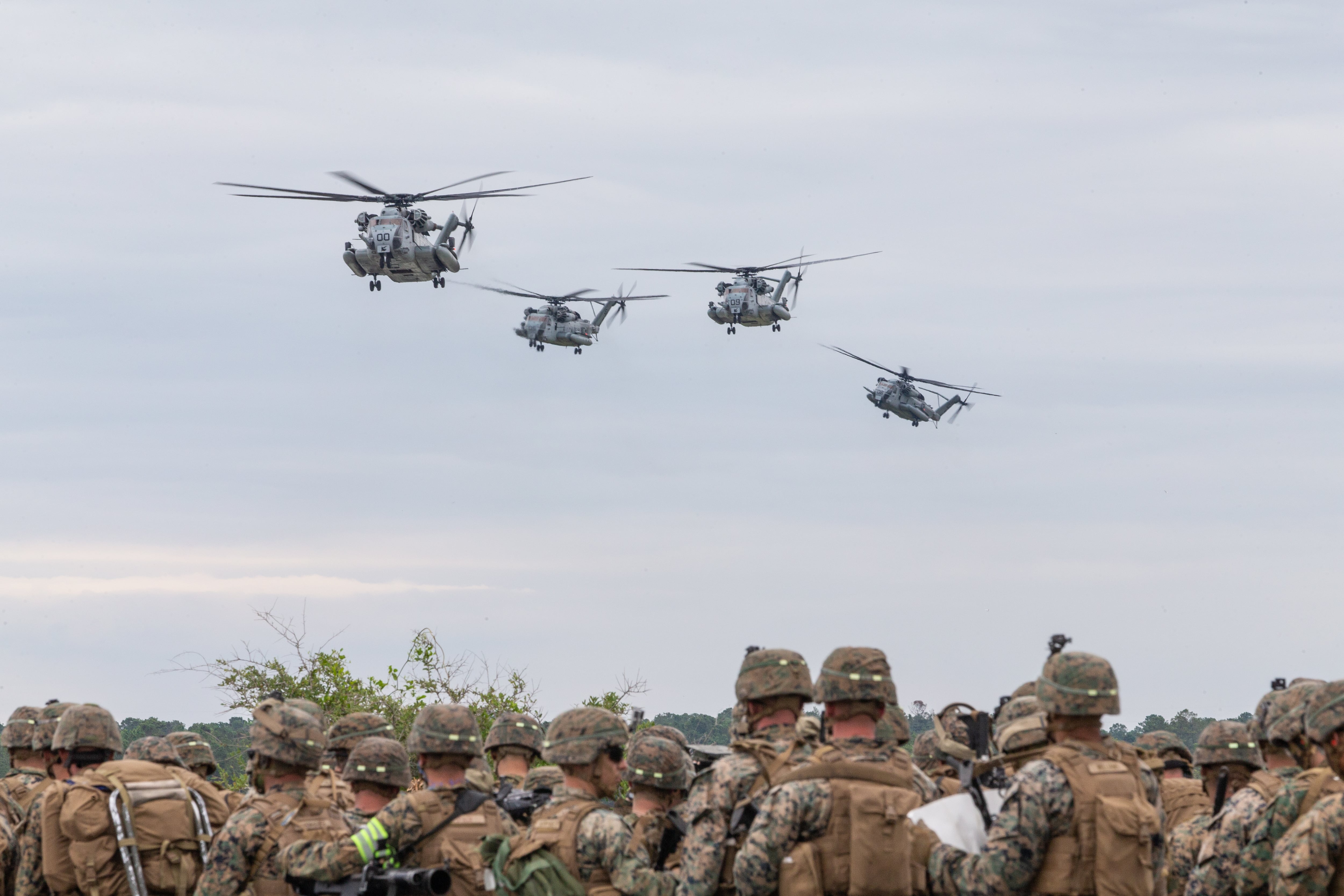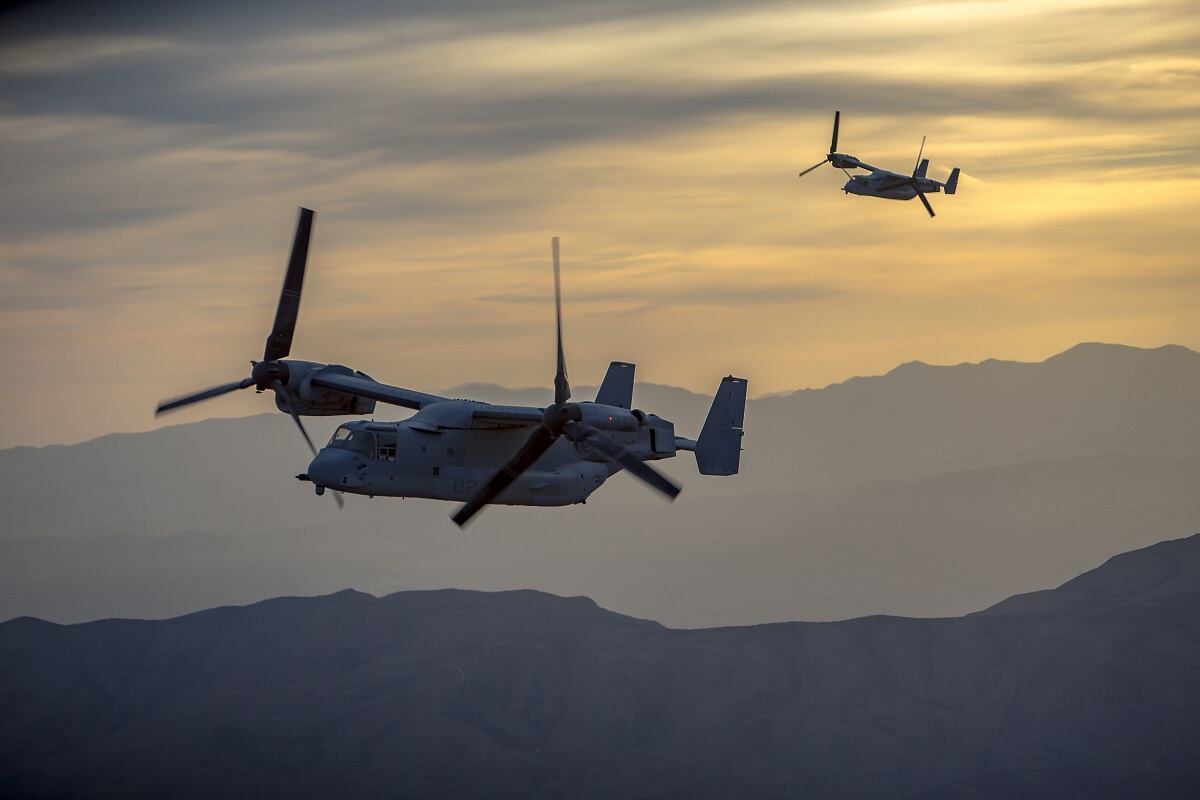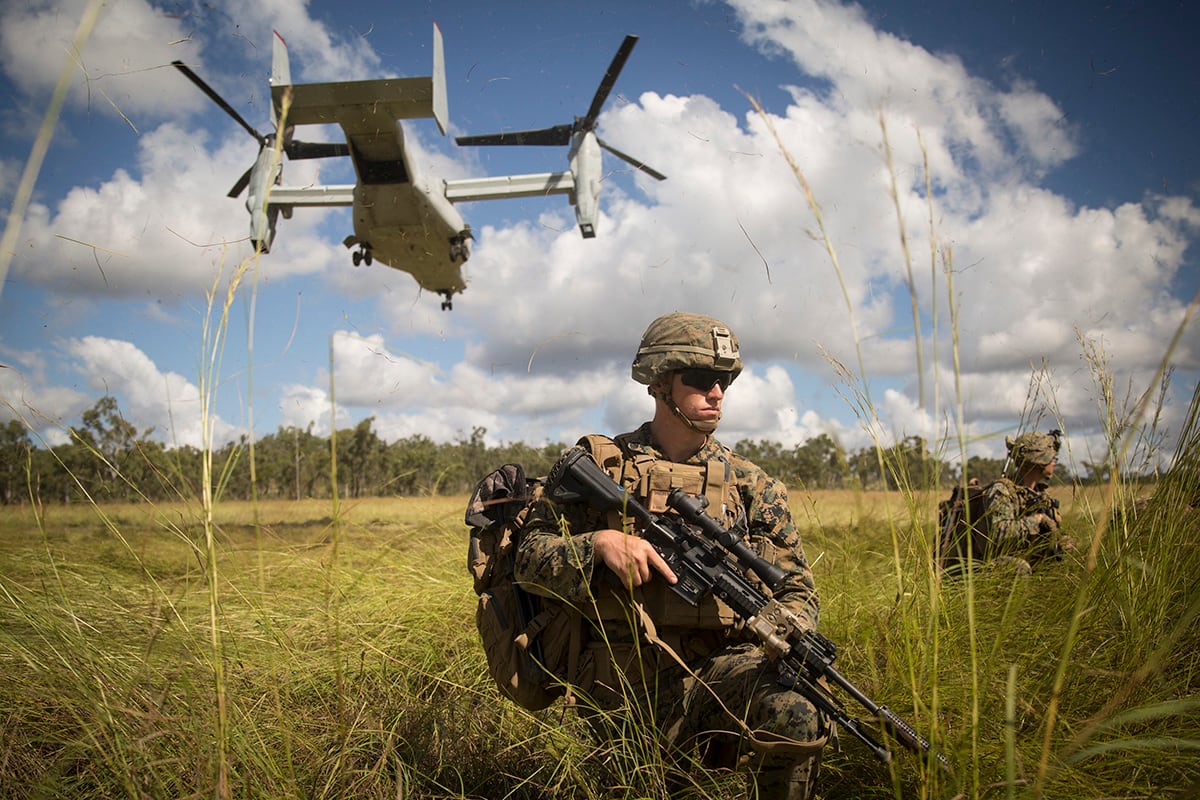In mid-June, the Corps put on a stunning display of air power when dozens of MV-22 Ospreys and CH-53s elephant walked in a tight formation the Miramar, California, air station runway as they took off in a mass flight.
Less than a week later, tilt-rotors and heavy lift helicopters aboard Camp Lejeune, North Carolina, carried Marines into one of the Corps’ largest air assault exercises in a decade.
But as the Marine Corps flexes its airlift muscles, hiding in the background are a large number of Marine Ospreys that are not mission capable due to maintenance issues and staffing shortages, according to military officials.
The MV-22 Osprey has a dismal mission capable rate hovering near 60 percent, according to data from the Marine Corps. Corps officials say that mission capable rate is an increase from the low 50 percent levels maintained throughout fiscal year 2018.
RELATED

The numbers are troubling as the Osprey is vital to how the Corps fights and moves Marines around the battlefield. The aircraft also is instrumental in humanitarian disaster relief.
Marine spokesman Capt. Christopher Harrison told Marine Corps Times that the Osprey is the Corps’ “most in-demand and deployed aircraft,” and that at “any given moment, five to seven” MV-22 squadrons are forward-deployed.
The Corps’ 2019 aviation plan noted that Marine officials were aware of “personnel deficits” and shortfalls in “qualifications and experience” at its Osprey squadrons.
Continued growth in the MV-22 Osprey program compounds the issue, as the Corps only has one initial training squadron charged with training Osprey pilots, maintainers and aircrew.
That squadron is Marine Medium Tiltrotor Training Squadron 204, or VMMT-204, based out the New River, North Carolina, air station. The Corps says it is looking at increasing capacity at the training squadron to pop out more aircrew members.
Harrison explained that the MV-22 community “is still in transition,” and that the 17th active MV-22 squadron just reached initial operating capability this spring — with another Osprey squadron on deck to stand up in 2021.
“Maintaining high readiness with the Osprey (or any modern aircraft, for that matter) is complex,” Harrison said in an emailed statement.
But the Corps has a plan to tackle the readiness issue. That plan is hinged on addressing manpower issues and modernizing older model Ospreys. The program is called the V-22 Readiness Program, Harrison said.
The Osprey readiness program “takes a holistic approach to readiness recovery by providing contract maintenance support, increased engineering support, and improved training for our maintainers and increased component supply depth and breadth,” Harrison explained.
But the current manning numbers for maintainers and air crew across the Osprey community do not appear dire.
RELATED

According to data obtained by Marine Corps Times through a government records request, avionics, maintainers and crew chiefs are manned between 83 percent and 94 percent.
Tilt-rotor mechanics are overmanned slightly at 105 percent, while Osprey pilots are staffed at only 69 percent. This data is current as of February.
The personnel numbers appear relatively healthy, but continued growth in the community could stretch that talent pool and put stresses on the school house.
The Corps also is looking at upgrading its older Block B MV-22s to the Block C configuration, Harrison said.
According to Boeing, Block C variants have an upgraded weather radar that aids in navigating in inclement weather conditions, an improved electronic warfare system and enhanced displays in the cockpit that afford better situational awareness.
Boeing delivered its first Block C MV-22 to the Corps in 2012, according to a release on Boeing’s website.
Harrison told Marine Corps Times that upgrading the MV-22s to the C variant will streamline maintenance issues and improve overall readiness for the Corps’ fleet of tilt-rotors.

Harrison cited a couple of examples of where the Block C variant is already boosting readiness.
According to Harrison, Marine Helicopter Squadron One and VMAT-204 both have common Block C configurations and “regularly report” 80 percent mission capable rates. Marine Helicopter Squadron One is charged with transporting the president and other important officials.
The effort to upgrade B variants to Block C is known as the Common Configuration-Readiness and Modernization, or CC-RAM initiative, Harrison explained.
In January 2018, the Defense Department announced it had awarded Bell-Boeing a nearly $69 million contract to upgrade three Block B MV-22 aircraft to Block C.
“The modified aircraft will have the readiness enhancements the Block Cs have benefited from while providing the fleet with a common configuration to streamline maintenance and sustainment,” Harrison said.
The Corps is also looking to improve the nacelle, which is the engine housing, with improved wiring harnesses. Harrison said the new wiring will make the “nacelle more maintainer friendly.”
“We believe we’ll see an additive positive effect on readiness by introducing more reliable systems, streamlined procedures, and improved maintainability,” Harrison explained.
Shawn Snow is the senior reporter for Marine Corps Times and a Marine Corps veteran.




